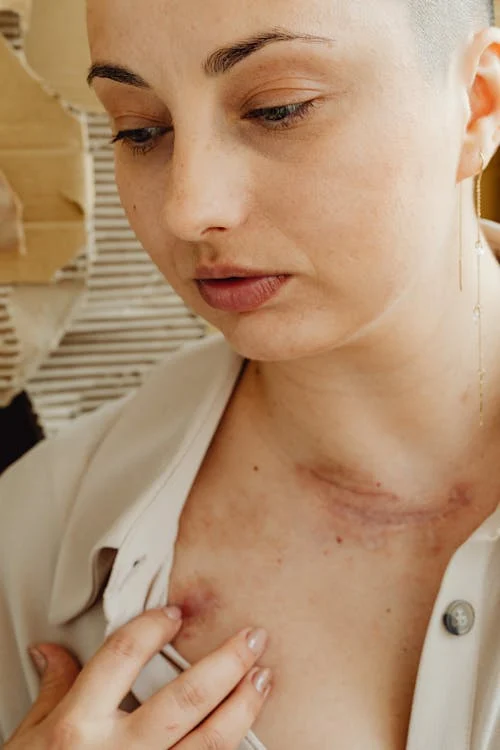Scars left behind after skin cancer treatment are not just physical reminders; they can influence your skin health. Whether you’ve undergone surgery, cryotherapy, or another treatment, proper scar care plays a significant role in both healing and appearance. With the right strategies in place, it’s possible to nurture these scars effectively and move toward healthier skin. Here’s how to manage skin cancer scars:
Use Proper Wound Care
Keeping the area clean and moisturized is a priority. To clean the wound, use mild soap and lukewarm water. Avoid scrubbing the area, as this could irritate the healing skin. Gently pat it dry with a soft, clean towel.
Once clean, apply a suitable ointment or antibiotic cream recommended by your dermatologist. Cover the scar with a non-stick, breathable bandage to protect it during the day. Changing the bandage daily or as soon as it becomes dirty helps keep the area safe from infection. Successfully following these steps lays the groundwork for healing.
Protect from Sun Exposure
Sunlight has a significant impact on how your scar heals. UV rays can cause discoloration, particularly in fresh scars, making them more noticeable. Wearing sunscreen with high SPF is non-negotiable before stepping outside. Apply it generously over the scar and surrounding areas.
If the scar is located on a part of the body that is frequently exposed, such as your face, arm, or neck, wear protective clothing. A hat with a wide brim or UV-blocking fabric covers scars without discomfort. Avoid prolonged sun exposure to prevent complications while you are healing.
Try Getting Laser Treatments
For those seeking to minimize the appearance of skin cancer scars, laser treatments provide proven results. Dermatologists utilize laser technology to stimulate collagen production in the deep layers of the skin, thereby encouraging faster skin regeneration. Fractional lasers target the texture and depth of scars, helping smooth the skin over time.
Before starting such treatments, it’s worth scheduling a consultation with a professional. They determine the most suitable options based on your skin type and the characteristics of the scar. Combining this approach with good skincare may produce notable, long-term improvements in scar appearance.
Wear Various Silicone Products
Silicone products, including gel sheets and ointments, have gained recognition as effective tools for managing scars. This material forms a barrier on the surface that locks in moisture, softens the tissue, and flattens raised scars over time. Silicone gel sheets come in easy-to-use strips, making them convenient for daily application. Diligently using these products consistently for several weeks to months improves outcomes. These tools are readily available at pharmacies, and their ease of use makes them a practical addition to your scar management routine.
Find a Dermatologist for Skin Cancer Scars
While following these strategies, remember that healing skin cancer scars takes time. You may notice gradual yet meaningful changes over the course of months. Keeping up with your scar care routine ultimately promotes healthy progress. If the appearance or texture of the scar raises concerns, consulting a dermatologist helps assess options for advanced treatments. Whether it’s through medical intervention or home care, nurturing your skin with these methods may provide lasting relief.
- FREHF – The Revolutionary Future Of Human-Centered Technology!
- Adsy.Pw/Hb3 – Boost Your SEO And Drive More Traffic!
- Fitness Based Vacations By Timeshealthmage.com!
- TimesHealthMag Tips For Improving Sleep Quality – Expert Advice For Better Rest!
- How TimesHealthMage Helps Improve Your Lifestyle Habits!


Leave a Reply